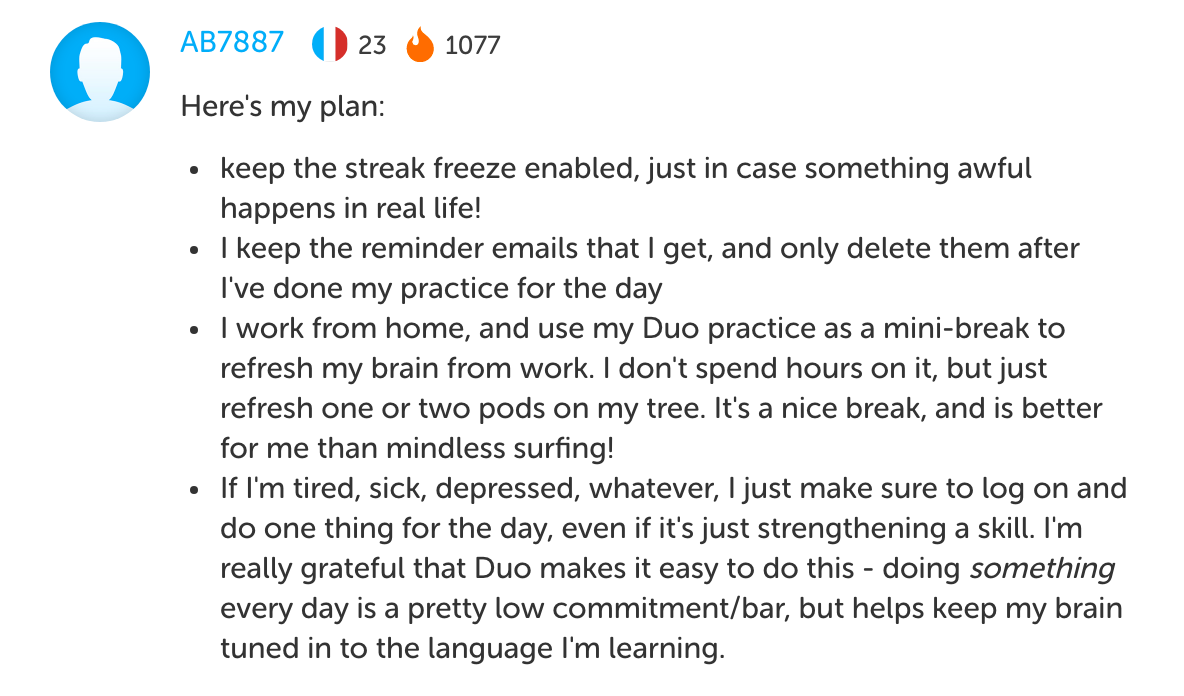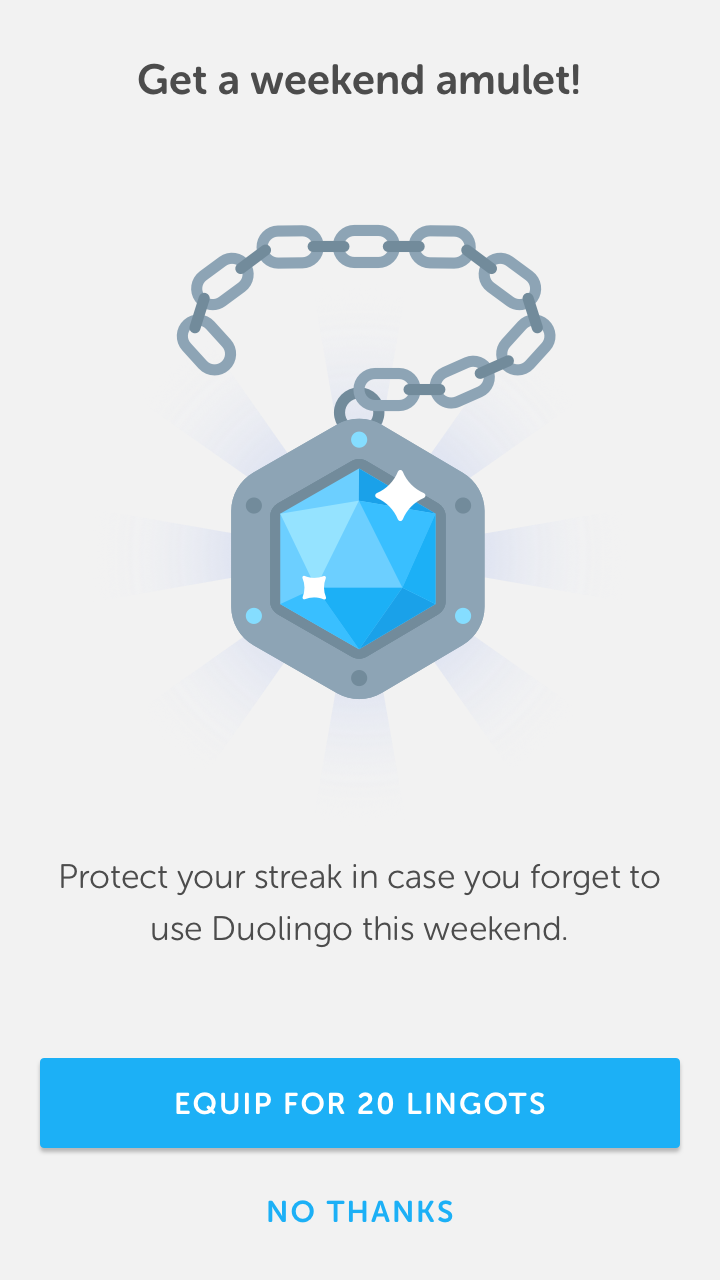Learning a new language is a lot like going to the gym: many people want to do it, but making it a regular habit is challenging.
I’m a Product Manager on Duolingo’s Growth Team. My team spends a lot of time thinking about how we can motivate Duolingo learners, and I’d like to share the results of two A/B tests that we ran recently to encourage learners to keep a streak.
Streaks on Duolingo
What is a streak? Simply put, if you have a seven-day streak, then you’ve done something for seven days in a row. Miss a single day, and your streak resets to zero.
Streaks are not new, and people use them as a source of motivation for many different situations. For example, members of the United States Running Streak Association must run at least a mile each day to maintain their running streak. At the time of this post, a writer from California is on a 17,481-day streak, which equates to nearly 48 years of running, with no rest days!
On Duolingo, we ask learners to set a goal for how much time they’d like to spend learning each day. Meeting this goal every day allows them to maintain a streak.
Right: If they complete their goal numerous days in a row, they get a streak.


We display learners’ streaks prominently throughout their Duolingo experience using a flame icon. In addition, we encourage them to keep going by sending personalized reminder messages about their streak.
Right: We remind learners to keep their streak by sending personalized email reminders.


Many learners are proud of their streak and highly averse to losing it. At Duolingo, we have friendly competitions in the office with our co-workers to see who can maintain the longest streak. In fact, one of the longest Duolingo employee streaks belongs to a former coworker, who maintains his streak of 1,296 days even though he’s now working elsewhere.


Streak Wager A/B Test
Our team wanted to make the streak even more motivating. We hypothesized that getting learners to explicitly challenge themselves to maintain a streak would make them more likely to work toward one. We ran an A/B test where we surfaced a “Streak Wager” store item at the end of a lesson and asked learners if they wanted to spend in-game currency to challenge themselves to keep their streak for 7 more days. If they were successful, we’d reward them with double their original investment.
Right: If they were successful, they'd double their original investment.


This experiment was a success. Learners who were offered the Streak Wager came back to the app more frequently and completed more lessons than learners who were not offered the Streak Wager. We saw statistically significant increases in Day-1, Day-7 and Day-14 user retention, with Day-7 retention showing the greatest improvement at +14%. This intuitively makes sense; learners were more likely to stick around until the 7th day because that’s when they get rewarded for completing the streak wager.
Weekend Amulet A/B Test
While keeping a streak is great for motivation, losing a streak can be very discouraging.
To address this, our team brainstormed ways to help users keep their streaks while taking a few much-needed breaks. We created a new A/B test which we called the “Weekend Amulet.” Every Friday, users would be able to equip an item from our store and keep their streaks even if they don’t use Duolingo over that weekend. We focused on weekends because the number of Duolingo daily active users peak midweek, and decline by as much as 5-10% on weekends. We thought that if we helped learners keep their streak over the weekend, they would be more likely to come back on Monday.

This turned out to be true – learners offered the Weekend Amulet were 4% more likely to come back a week later and 5% less likely to lose their streak. It sounds counterintuitive, but we learned that by giving learners the option to take a break, they’re actually more likely to do more in the long run.
These results were consistent with our research showing that learners who binge on Duolingo lessons were much more likely to abandon the app than learners who pace themselves appropriately. In that sense, streaks help tremendously with learning, since they encourage treating language learning as more of a marathon than a sprint.
Final Thoughts
Learning a language is hard, but at Duolingo, we invest a lot in making it easier through data analysis and A/B testing. Streaks are incredibly motivating, and we’re constantly innovating with them to help our learners form a longer-term language-learning habit.
Interested in helping millions of people worldwide learn languages and stick to their commitments? Duolingo is looking to hire Product Managers. Find out more.
Special thanks to Peter Baker, Beth Chasse, Michaela Kron, Laura Nestler and Gina Gotthilf for their help with this blog post.
